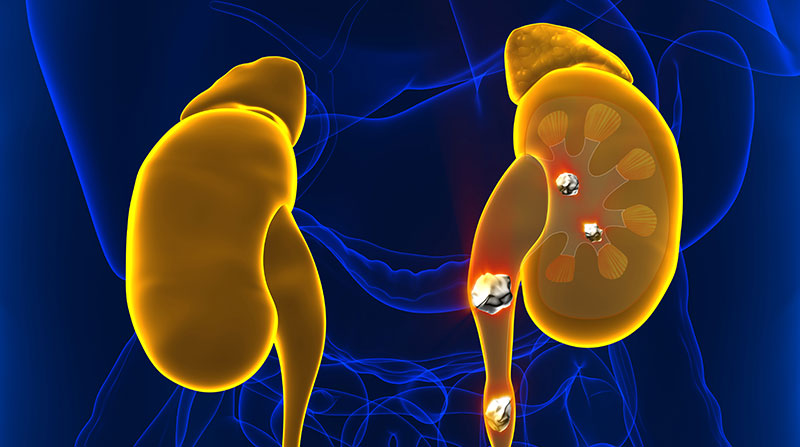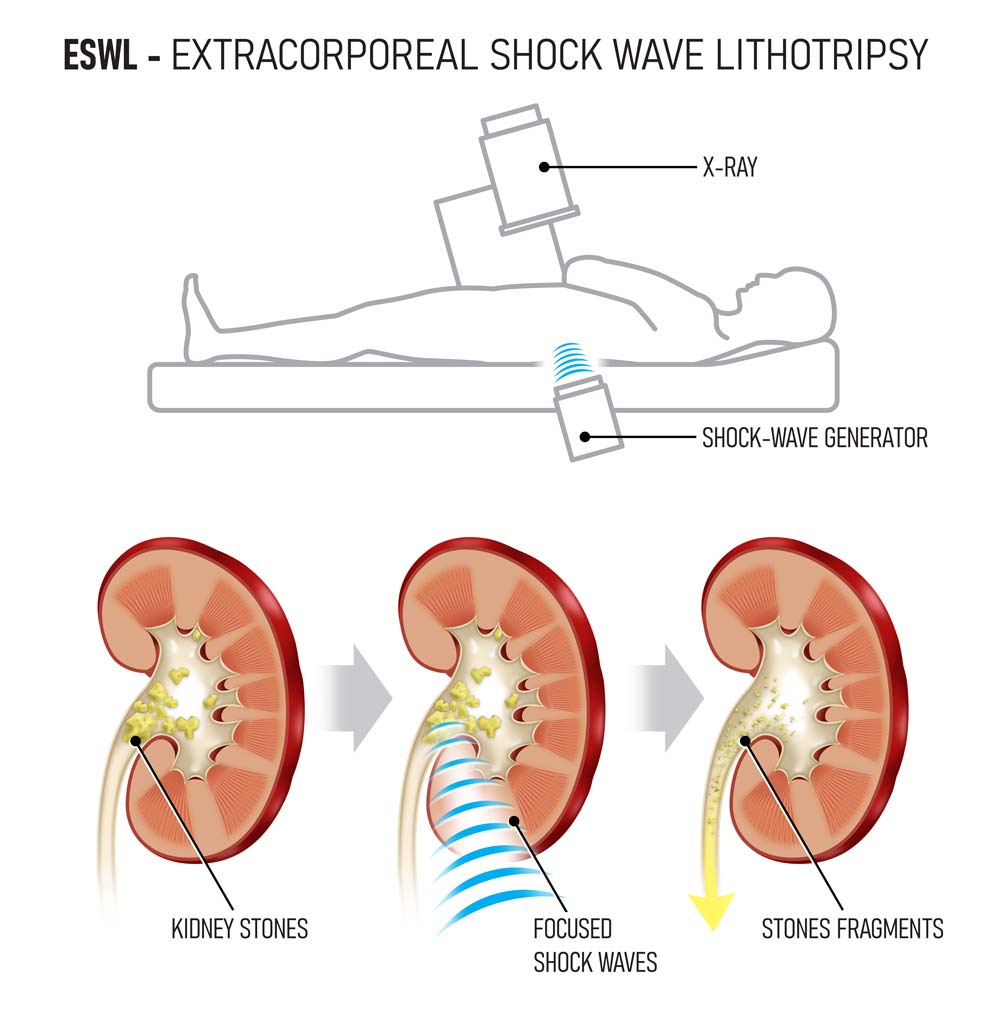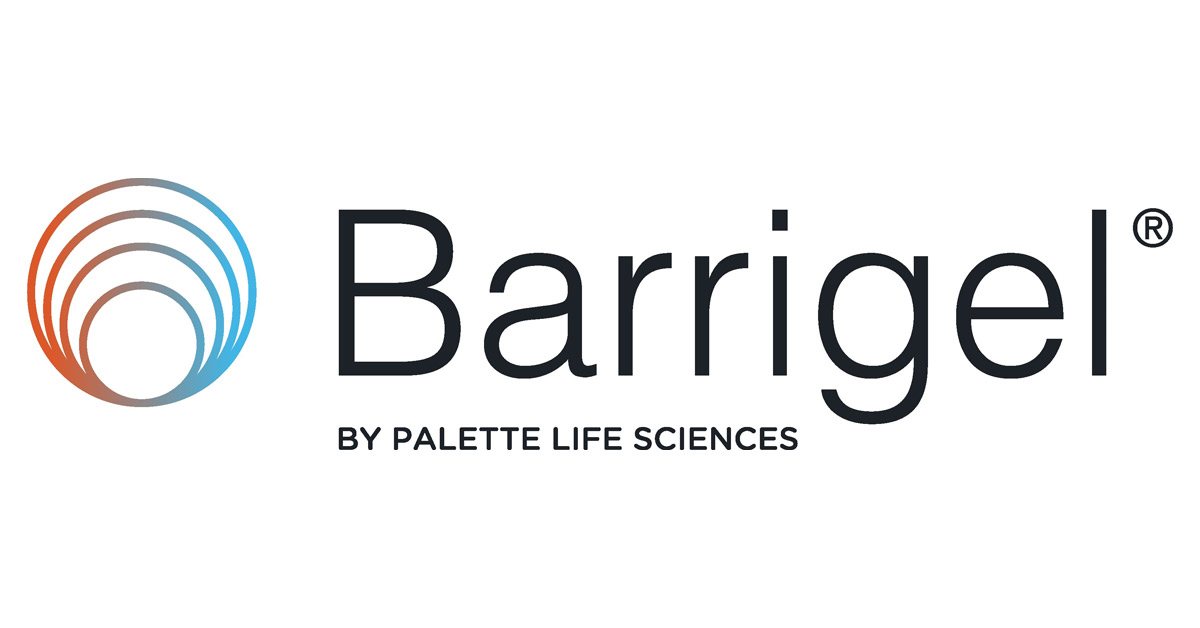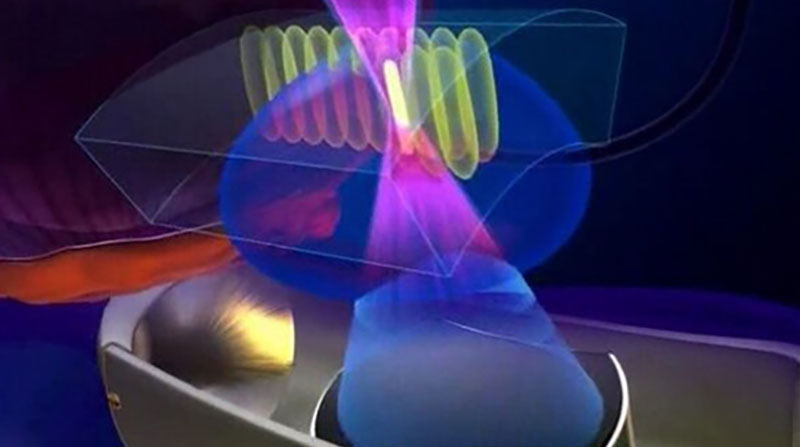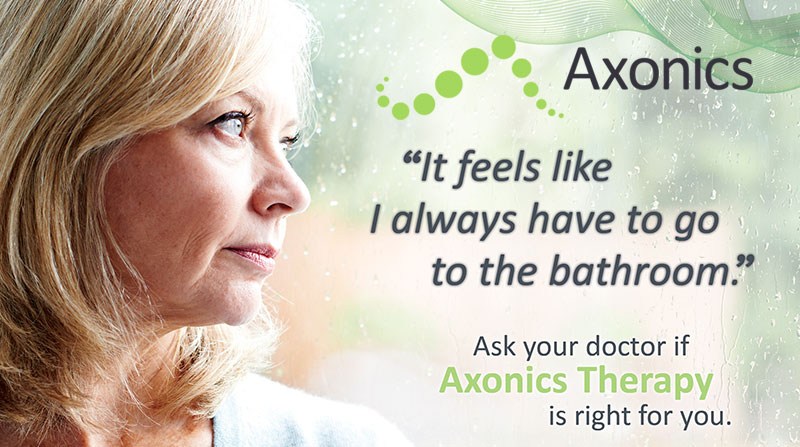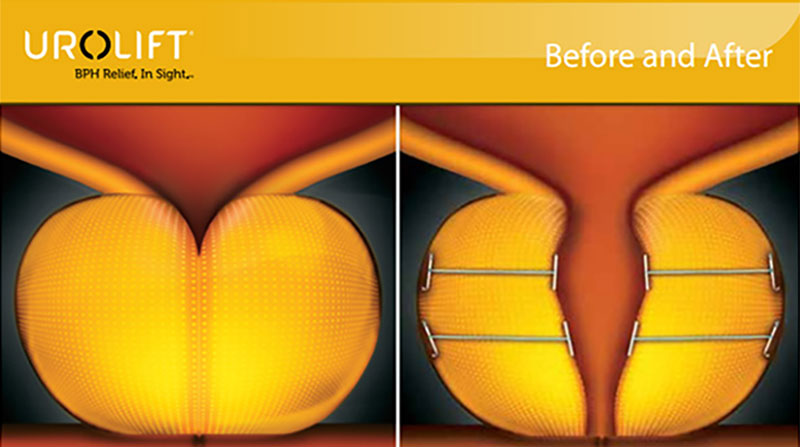Our Physicians That Offer This Treatment
What is extracorporeal shock wave lithotripsy?
Extracorporeal shock wave lithotripsy is a technique for treating stones in the kidney and ureter that does not require surgery. Instead, high energy shock waves are passed through the body and used to break stones into pieces as small as grains of sand. Because of their small size, these pieces can pass from the body along with the urine.
What does the treatment involve?
There are two ways to remove stones using shock wave treatment. In one method, the patient is placed in a tub of lukewarm water. Using x-rays or ultrasound to pinpoint the location of the stones, the body is positioned so that the stones are targeted precisely. In the second, more common method, the patient lies on top of a soft cushion or membrane through which the waves pass. About 1-2 thousand shock waves are needed to crush the stones. The complete treatment takes about 45 to 60 minutes.
What are the advantages and disadvantages of this treatment?
The main advantage of this treatment is that many patients may be treated for kidney stones without surgery. As a result, complications, hospital stays, costs and recovery time are reduced. Unfortunately, not all types of kidney stones can be treated this way. In addition, stone fragments are occasionally left in the body and additional treatments are needed.
Does the patient need anesthesia?
In general, some type of anesthesia–either local, regional or general–is used to help the patient remain still and to reduce any discomfort.
Does the patient need to be hospitalized?
Usually, patients are hospitalized for a day or two. In some cases, lithotripsy may be done on an outpatient basis.
What can the patient expect after treatment?
After treatment is complete, the patient can move about almost at once. Many people can fully resume daily activities within one to two days. Special diets are not required, but drinking plenty of water helps the stone fragments pass. Some pain may occur when the fragments pass, which begins soon after treatment and may last for up to four to eight weeks. Oral pain medication and drinking lots of water will help relieve symptoms.
What are some complications or side effects?
Most patients have some blood in the urine for a few days. The shattered stone fragments may cause discomfort as they pass through the urinary tract. Sometimes, the stone is not completely shattered, and additional treatments may be needed.
Can all kidney stone patients have this kind of treatment?
No. The size, number, location and composition of the stones are factors that must be taken into account when exploring treatment options. Patient size may limit use of the water bath method, but patients of many sizes can be treated with the water cushion method.
Also the stones must be clearly viewed by the x-ray monitor so the shock waves can be targeted accurately. If anatomical abnormalities prevent this, other methods of stone removal may have to be considered. Through examination, x-ray and other tests, the doctor can decide whether this is the best treatment for the patient. In some cases, extracorporeal shock wave lithotripsy may be combined with other forms of treatment.
How successful is extracorporeal shock wave lithotripsy?
In those patients who are thought to be good candidates for this treatment, about 70 to 90 percent are found to be free of stones within three months of treatment. The highest success rates seem to be in those patients with mobile stones that are located in the upper portions of the urinary tract (kidney and upper ureter). After treatment, some patients may still have stone fragments that are too large to be passed. These can be treated again if symptoms persist.
What other treatment choices are available?
About 90 percent of stones pass through the urinary system without treatment. In cases where this does not occur, treatment to remove stones may be needed. Some stones may be dissolved by medicines. In other cases, one of the following methods of stone removal may be needed:
Percutaneous Stone Removal
When stones are quite large (more than 2 cm) or in a location that does not allow effective lithotripsy, a technique called percutaneous stone removal may be used. In this method, the surgeon makes a small incision in the back and creates a tunnel directly into the kidney. A tube is inserted and the stone is removed through this tube.
Ureteroscopic Stone Removal
For stones found in the lower part of the urinary tract, the doctor may pass a ureteroscope (a hollow tube-like device) up into the bladder and ureter. A basket-like device may be passed through the tube to grasp and withdraw the stone.
How much does lithotripsy cost?
The cost of lithotripsy varies. Check with your urologist or your local medical center for information about current costs. If you are considering this procedure, contact your insurance company to make sure that costs are covered.
Where can patients receive this type of treatment?
Treatment is available at many hospitals, outpatient centers and sometimes even in mobile units. For information about where to have lithotripsy done in your area, contact your doctor, local hospital or health care facility.
Can kidney stones be prevented?
Yes. Kidney stones affect more than one million Americans each year. People who have had more than one kidney stone are likely to form another. To determine the possible cause of stones, the patient may be asked to collect a 24-hour urine sample. Once the cause is found, the doctor may recommend drinking more liquids, dietary changes and medication.

